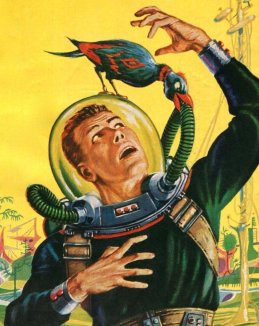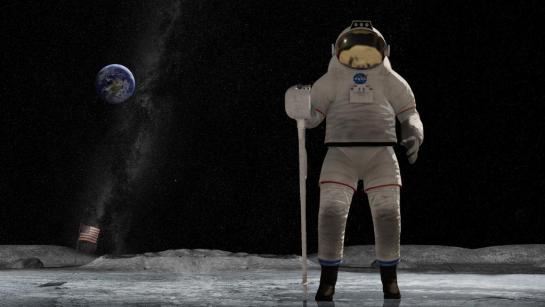As so many of my favorite lines of thought have begun, this one was started with a provocative question lobbed at me across social media. Friend and colleague Jonathan Korman tweeted to ask, above a graphic of the Black Mirror logo, “Surely there is another example of pop design fiction?”
I replied in Twitter, but my reply there was rambling and unsatisfying, so I’m re-answering here with an eye toward being more coherent.
What’s Design Fiction?
If you’re not familiar, design fiction is a practice that focuses on speculative artifacts to raise issues. While leading the interactions program at The Royal College of Art, Anthony Dunne and Fiona Raby catalyzed the practice.
“It thrives on imagination and aims to open up new perspectives on what are sometimes called wicked problems, to create spaces for discussion and debate about alternative ways of being, and to inspire and encourage people’s imaginations to flow freely. Design speculations can act as a catalyst for collectively redefining our relationship to reality.”
Anthony Dunne and Fiona Raby, Speculative Everything: Design, Dreaming, and Social Dreaming
Dunne & Raby tend to often lean toward provocation more than clarity (“sparking debate” is a stated goal, as opposed to “identifying problems and proposing solutions.”) Where to turn for a less shit-stirring description? Like many related fields there are lots of competing definitions and splintering. John Spicey has listed 26 types of Design Fiction over on Simplicable. But I am drawn to the more practical definition offered by the Making Tomorrow handbook.
Design Fiction proposes speculative scenarios that aim to stimulate commitment concerning existing and future issues.
Nicolas Minvielle et al., Making Tomorrow Collective
To me, that feels like a useful definition and clearly indicates a goal I can get behind. Your mileage may vary. (Hi, Tony! Hi, Fiona!)
Some examples should help.
Dunne & Raby once designed a mask for dogs called Spymaker, so that the lil’ scamps could help lead their owners to unsurveilled locations in an urban environment.

Julijonas Urbonas while at RCA conceived and designed a “euthanasia coaster” which would impart enough Gs on its passengers to kill them through cerebral hypoxia. While he designed its clothoid inversions and even built a simple physical model, the idea has been recapitulated in a number of other media, including the 3D rendering you see below.
This commercial example from Ericsson is a video with mild narrative about appliances having a limited “social life.”
Corporations create design fictions from time to time to illustrate their particular visions of the future. Such examples are on the verge of the space, since we can be sure those would not be released if they ran significantly counter to the corporation’s goals. They’re rarely about the “wicked” problems invoked above and tend more toward gee-whiz-ism, to coin a deroganym.
How does it differ from sci-fi?
Design Fiction often focuses on artifacts rather than narratives. The euthanasia coaster has no narrative beyond what you bring or apply to it, but I don’t think this lack of narrative a requirement. For my money, the point of design fiction is focused on exploring the novum more than a particular narrative around the novum. What are its consequences? What are its causes? What kind of society would need to produce it and why? Who would use it and how? What would change? What would lead there and do we want to do that? Contrast Star Wars, which isn’t about the social implications of lightsabers as much as it is space opera about dynasties, light fascism, and the magic of friendship.

But, I don’t think there’s any need to consider something invalid as design fiction if it includes narrative. Some works, like Black Mirror, are clearly focused on their novae and their implications and raise all the questions above, but are told with characters and plots and all the usual things you’d expect to find.
So what’s “pop” design fiction?
As a point of clarification, in Korman’s original question, he asked after pop design fiction. I’m taking that not to mean the art movement in the 01950–60s, which Black Mirror isn’t, but rather “accessible” and “popular,” which Black Mirror most definitely is.

What would distinguish other sci-fi works as design fiction?
So if sci-fi can be design fiction, what would we look for in a show to classify it is design fiction? It’s a sloppy science, of course, but here’s a first pass. A show can be said to be design fiction if it…
- Includes a central novum…
- …that is explored via the narrative: What are its consequences, direct and indirect?
- Corollary: The story focused on a primary novum, and not a mish-mash of them. (Too many muddle the thought experiment.)
- Corollary: The story focuses on characters who are most affected by the novae.
- Its explorations include the personal and social.
- It goes where the novum leads, avoiding narrative fiats that sully the thought experiment.
- Bonus points if it provides illustrative contrasts: Different versions of the novum, characters using it in different ways, or the before and after.
With this stake in the ground, it probably strikes you that some subgenres lend themselves to design fiction and others do not. Anthology series, like Black Mirror, can focus on different characters, novae, and settings each episode. Series and franchises like Star Wars and Star Trek, in contrast, have narrative investments in characters and settings that make it harder to really explore nova on their own terms, but it is not impossible. The most recent season of Black Mirror is pointing at a unified diegesis and recurring characters, which means Brooker may be leaning the series away from design fiction. Meanwhile, I’d posit that the eponymous Game from Star Trek: The Next Generation S05E06 is an episode that acts as a design fiction. So it’s not cut-and-dry.

What makes this even more messy is that you are asking a subjective question, i.e. “Is this focused on its novae?”, or even “Does this intend to spur some commitment about the novae?” which is second-guessing whether or not what you think the maker’s intent was. As I mentioned, it’s messy, and against the normal critical stance of this blog. But, there are some examples that lean more toward yes than no.
Jurasic Park
Central novum: What if we use science to bring dinosaurs back to life?
Commitment: Heavy prudence and oversight for genetic sciences, especially if capitalists are doing the thing.

This example leads to two observations. First, the franchises that follow successful films are much less likely to be design fiction. I’d argue that every Jurassic X sequel has simply repeated the formula and not asked new questions about that novum. More run-from-the-teeth than do-we-dare?
Second is that big-budget movies are almost required to spend some narrative calories discussing the origin story of novae at the cost of exploring multiple consequences of the same. Anthology series are less likely to need to care about origins, so are a safer bet IMHO.
Minority Report
Central novum: What if we could predict crime? (Presuming Agatha is a stand-in for a regression algorithm and not a psychic drug-baby mutant.)
Commitment: Let’s be cautious about prediction software, especially as it intersects civil rights: It will never be perfect and the consequences are dire.

Blade Runner
Central novum: What if general artificial intelligence was made to look indistinguishable from humans, and kept as an oppressed class?
Commitment: Let’s not do any of that. From the design perspective: Keep AI on the canny rise.

Ex Machina
Central novum: Will we be able to box a self-interested general intelligence?
Commitment: No. It is folly to think so.

Colossus: The Forbin Project
Central novum: What if we deliberately prevented ourselves from pulling the plug on a superintelligence, and then asked it to end war?
Commitment: We must be extremely careful what we ask a superintelligence to do, how we ask it, and the safeguards we provide ourselves if we find out we messed it up.

Person of Interest
Central novum: What if we tried to box a good superintelligence?
Commitment: Heavy prudence and oversight for computer sciences, especially if governments are doing the thing.

This is probably my favorite example, and even though it is a long-running series with recurring characters, I argue that the leads are all highly derived, narratively, from the novum, and still counts strongly.
But are they pop?
Each of these are more-or-less accessible and mainstream, even if their actual popularity and interpretations vary wildly. So, yes, from that perspective.
Jurassic Park is at the time of writing the 10th highest-grossing sci-fi movie of all time. So if you agree that it is design fiction, it is the most pop of all. Sadly, that is the only property I’d call design fiction on the entire highest-grossing list.
So, depending on a whole lot of things (see…uh…above) the short answer to Mr. Korman’s original question is yes, with lots of if.
What others?
I am not an exhaustive encyclopedia of sci-fi, try though I may. Agree with this list above? What did I miss? If you comment with additions, be sure and list, as I did these, the novum and the challenge.



































































































































